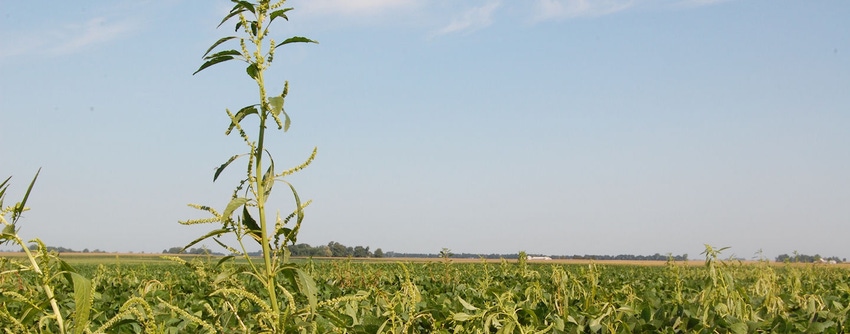August 23, 2016

Listen to ag’s critics and you’d think that herbicide-resistant weeds are a new phenomenon caused by overuse of glyphosate in genetically engineered crops. But nothing could be further from the truth.
Glyphosate-resistant crops were introduced 20 years ago, but 2017 is the 60th anniversary of the first reports of herbicide-resistant weeds.
According to a recent report by the Weed Science Society of America, the first known case of herbicide resistance came in 1957 when a spreading dayflower growing in a Hawaiian sugarcane field was found to be resistant to a synthetic auxin herbicide. Synthetic auxin herbicides include 2,4-D. One biotype of spreading dayflower was able to withstand five times the normal treatment dosage.
That same year, wild carrot growing on roadsides in Ontario, Canada, was found to be resistant to some of the same synthetic auxin herbicides. Since then, 250 species of weeds have evolved resistance to 160 different herbicides that span 23 of the 26 known herbicide mechanisms of action. They are found in 86 crops in 66 countries.
“Given all the media attention paid to glyphosate, you would think it would have the greatest number of resistant weed species,” says David Shaw, a Mississippi State University weed scientist. “Though there are currently 35 weed species resistant to the amino acid synthesis inhibitor glyphosate, there are four times as many weed species resistant to ALS inhibitors, and three times as many resistant to PS II inhibitors.”
What is unique about glyphosate resistance is the severity of selection pressure. More than 90% of soybean, corn, cotton and sugarbeet acres in the U.S. are glyphosate-tolerant.
“The sheer size of the crop acreage impacted by glyphosate-resistant weeds has made glyphosate the public face for the pervasive problem of resistance,” says Shaw. “But resistance issues are far broader than a single herbicide and were around long before glyphosate-resistant, genetically engineered crops were even introduced.”
Resistant weeds can evolve whenever a single approach to weed management is used repeatedly to the exclusion of other chemical and cultural controls, he says.
There’s even evidence that weeds can become resistant to mechanical weed control.
Jason Norsworthy, University of Arkansas weed scientist, says Asian rice growers used to pull grass out of rice paddies by hand. But over time the grass changed to look so much like rice seedlings that farmers couldn’t tell them apart. The grass became resistant to weeding by hand because farmers couldn’t tell the difference between the weed and rice.
You May Also Like




